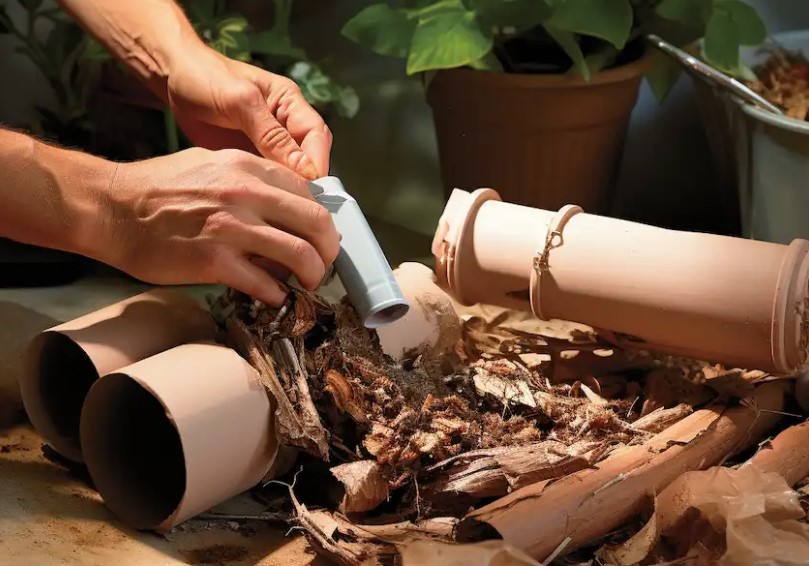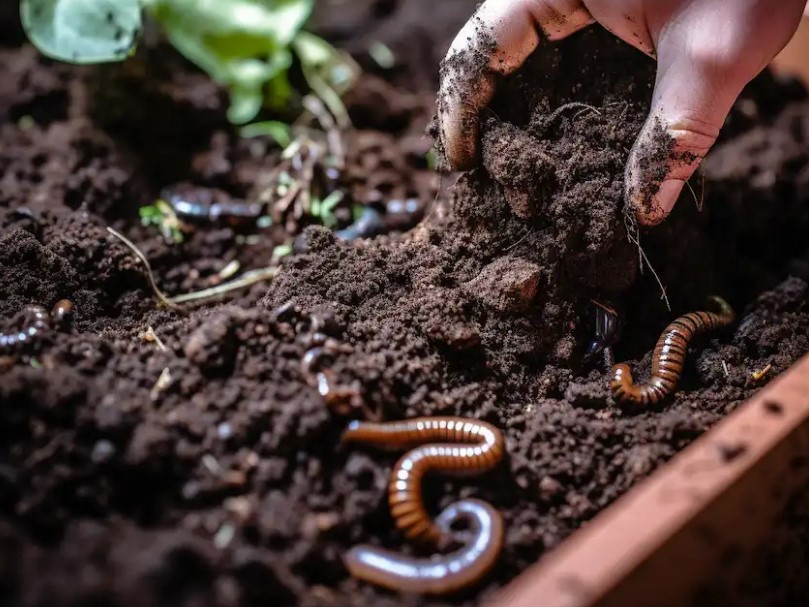Materials Required:
- A length of PVC pipe or a small bucket with a tight-fitting lid.
- An electric drill with a 3/16” or ¼” drill bit.
- Sandpaper for smoothing drilled holes.
- Organic materials for worm bedding like paper bags, newspaper, or dried leaves.
- Composting worms, such as Red Wigglers or Canadian Nightcrawlers. These can be sourced from bait shops or online.

Step-by-Step Instructions:
1. Choose a Location:
- Pick a cool, sheltered spot in your garden. Ensure it’s away from the water table to avoid flooding.
2. Prepare the Worm Tower:
- If using PVC pipe, cut it to the desired length (around 30cm is standard).
- Drill 5mm holes around the sides of the pipe or bucket, up to halfway up. This is for aeration and drainage.
- Smooth the edges of the holes with sandpaper to protect the worms.
3. Installation:
- Dig a hole in your chosen location deep enough to bury the pipe or bucket with only the top few centimeters sticking out.
- Place the pipe or bucket in the hole, with the holes side facing down.
- Backfill the hole with soil to secure the worm tower in place.
4. Add Bedding and Worms:
- Start by adding a layer of shredded paper or dry leaves at the bottom.
- Add your worms. Around 250-300 worms are recommended for each tower.
- Gradually add organic kitchen scraps, avoiding citrus, onion, garlic, dairy, and meat.

5. Maintenance:
- Regularly add organic matter and ensure the bedding stays moist but not soggy.
- Occasionally check for ‘worm tea’ at the bottom, which is an excellent liquid fertilizer.
- In case of ant problems, strategies like increasing moisture, using cinnamon, or vinegar can help.
6. Feeding the Worms:
- Feed the worms with a variety of kitchen scraps. Balance the ‘green’ kitchen waste with ‘brown’ materials like shredded paper.
- Avoid overfeeding, especially in the initial months.
7. Covering the Tower:
- Use a terracotta saucer or a PVC cap to cover the top, weighed down with a rock to prevent rodents.
8. Observation and Adjustments:
- Monitor the worm activity and adjust your feeding and watering as needed.
- The system is largely self-regulating, with worms naturally processing the organic matter.
By following these steps, you can create an effective and eco-friendly underground worm farm in your garden. This method not only recycles kitchen waste but also enriches the soil, making it a valuable addition to any garden.
